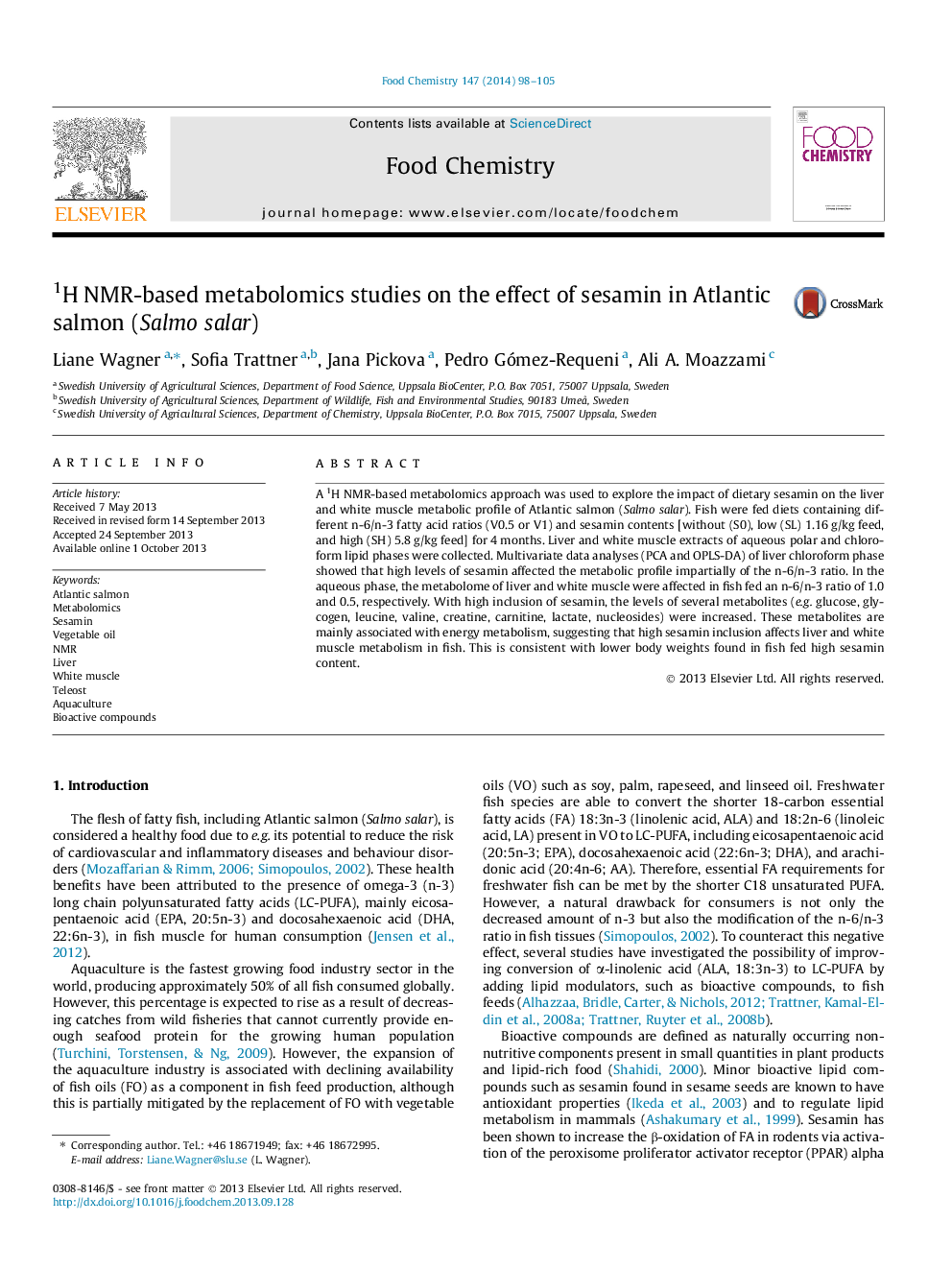| Article ID | Journal | Published Year | Pages | File Type |
|---|---|---|---|---|
| 7599666 | Food Chemistry | 2014 | 8 Pages |
Abstract
A 1H NMR-based metabolomics approach was used to explore the impact of dietary sesamin on the liver and white muscle metabolic profile of Atlantic salmon (Salmo salar). Fish were fed diets containing different n-6/n-3 fatty acid ratios (V0.5 or V1) and sesamin contents [without (S0), low (SL) 1.16Â g/kg feed, and high (SH) 5.8Â g/kg feed] for 4Â months. Liver and white muscle extracts of aqueous polar and chloroform lipid phases were collected. Multivariate data analyses (PCA and OPLS-DA) of liver chloroform phase showed that high levels of sesamin affected the metabolic profile impartially of the n-6/n-3 ratio. In the aqueous phase, the metabolome of liver and white muscle were affected in fish fed an n-6/n-3 ratio of 1.0 and 0.5, respectively. With high inclusion of sesamin, the levels of several metabolites (e.g. glucose, glycogen, leucine, valine, creatine, carnitine, lactate, nucleosides) were increased. These metabolites are mainly associated with energy metabolism, suggesting that high sesamin inclusion affects liver and white muscle metabolism in fish. This is consistent with lower body weights found in fish fed high sesamin content.
Keywords
Related Topics
Physical Sciences and Engineering
Chemistry
Analytical Chemistry
Authors
Liane Wagner, Sofia Trattner, Jana Pickova, Pedro Gómez-Requeni, Ali A. Moazzami,
